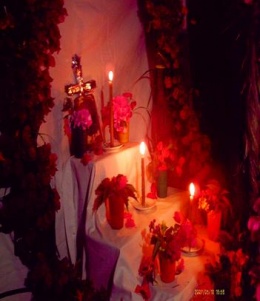4. Cuban Theater in the 17th Century

The first decades of the 17th century in Cuba were characterized by a lack of public performances. Therefore, Cuban theatrical life was represented in the early part of this century by performance platforms known as scaffolds, festivals, games, and Corpus Christi. The latter were enhanced by the Tarasca, the Giants, bulls, ponies, masquerades, characters in triumphal chariots, and autos. Popular revelry was also added, which gradually distanced theater from religious festivals.
Already in the second half of that five-year period, within the Cuban theater scene, according to a Memorial from the Archive of the Indies, it can be confirmed that theatrical performances were held inside churches. We can mention that in 1659, the play “Compete with the Stars” was staged in the Church of San Agustín and in a nunnery in the capital, the author of which remains unknown to this day.
This play, a non-religious comedy, is the first work discovered with documentary evidence. This performance sparked protests among Franciscan priests, who clashed with other religious orders and the newly appointed bishop, whom they accused of attending such un-Christian plays.
As a result, at the Diocesan Synod held in Havana in 1680, books of secular comedies, the attendance of clergy at performances, clumsy and indecent dances in churches and chapels, and women’s dances during Corpus Christi were all suppressed. The staging of “non-divine” plays inside churches was also prohibited. Religious colloquiums or comedies could only be performed with prior approval from the ecclesiastical authorities. Dances in churches were suppressed, along with the performance of secular comedies in Cuba in the 17th century.
Performances in Santiago de Cuba began to take place, taking place in a warehouse, which turned out to be a makeshift stage. The first Cuban actor, Melchor de las Casas, also emerged. He was born in Havana and performed in Seville between 1673 and 1674, before dying four years later in a shipwreck.
Names such as Benito de la Milla, who designed and manufactured costumes and masks between 1639 and 1641, stand out in this century. Others we can mention are Alonso de Méndez (1622), Agustín de Palma (1677), Nicolás Chirino Vandeval and Juan de Rojas (1693).
In the 17th century, street shows and popular entertainment were held in Cuba before the first theatrical performances. Thus, other Spanish religious festivals emerged, including the Altar of the Cross, common to all Christian communities and established in towns colonized by Spain.
We also find the Patron Saints’ Days or Major Festivals, which were very popular until the 19th century. These arose from the founding of the first towns, imposed by the evangelizing policy of the Catholic Church.
Numerous processions, such as the Encamisadas (The Encamisadas), and popular festivals such as the Fiestas Cortesanas (Court Festivals) and Fiestas Regionales (Regional Festivals) were also held in Cuba; these constitute other celebrations of the period. Despite all the above, cultural development in Cuba in the 17th century, and therefore of Cuban theater, was primitive and limited.








